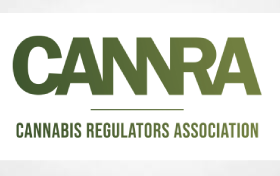by Brett Mulligan, Green Light Law Group
Within ten days of Governor Kate Brown signing HB 3000 into law the Oregon Liquor and Cannabis Commission (OLCC) and Oregon Department of Agriculture (ODA) began “Operation Table Rock,” an effort to conduct mass inspections of southern Oregon’s hemp farms. The agencies claim that more than 90 percent of registered hemp grow sites in Jackson and Josephine Counties have been visited so far.
How these visits were conducted make clear that the OLCC and ODA are increasingly commingling their efforts with law enforcement. At the most recent OLCC Commission hearing on September 23, 2021, Richard Evans, Senior Director of Licensing and Compliance for the OLCC, explained, “We had to set up interagency agreement with the Jackson and Josephine County Sheriff’s Office, the Oregon State Police, the Medford Police Department, and the Oregon Department of Agriculture… we treated this just like a normal law enforcement operation in that we did threat assessments for every location that we went to.”
Mr. Evans champions this operation as a success and provides statistics that appear to confirm his belief that most hemp grows in Oregon are illegally producing marijuana. As this blog post will explain, the statistics cited by Mr. Evans are likely misleading and based on questionable testing.
Operation Table Rock
Named after a volcanic plateau outside of Medford, Operation Table Rock sent law enforcement teams to a total of 316 locations, according to the OLCC. The OLCC claims that more than 50 percent of sites tested had crops that failed “presumptive testing.” Richard Evans also claims that the operation resulted in 17 different water diversion issues being found, and 10 cases of farmworker living conditions were reported to the Department of Human Services.
Presumptive Testing
The OLCC’s temporary rules (adopted July 16, 2021) lay out parameters for field testing. OAR 845-026-4100 establishes the process for “presumptive testing.” Three composite samples are taken from different production areas, or if the grow site has fewer than three production areas, each composite sample is taken from three different areas of the grow site. Notably, the rule expressly states that sampling is not required to be representative of the crop, grow site, or production areas; but if the representative sample shows a plant is marijuana and not hemp, then the entire production area fails the test.
There are five ways in which a composite sample will be declared positive as marijuana, instead of hemp, making the entire crop presumptively marijuana in the eyes of the agencies:
(a) At least fifty percent of composite samples taken from mature plants test at or above five percent total delta-9-THC;
(b) The average total delta-9-THC among the composite samples taken from mature plants tests at or above five percent;
(c) At least fifty percent of composite samples taken from immature plants test at or above a 5:1 ratio of total THC to total CBD;
(d) At least fifty percent of composite samples taken from immature plants test at or above one percent total delta-9-THC; or
(e) The average total delta-9-THC among the composite samples taken from immature plants tests at or above one percent total delta-9-THC.
Licensees can seek preharvest testing under OAR 603-048-0600 to rebut the findings of a presumptive test. The request for testing must be made within three days from the date of the notice of noncompliance. A crop will be released from detainment if valid test results are provided to the ODA within 15 days from the date of the notice.
Questionable Testing Technology
The LightLab portable machine tests used for these presumptive tests are “certified” according to the OLCC, but they are notoriously inaccurate. One shortcoming is many of the tests used a process that does not measure the stand-alone CBD/THC content of a plant, but rather, provides a CBD/THC ratio. Positive tests through this form of testing are often found inaccurate upon reexamination by more reliable testing.
One example is a well-known instance where a LightLab machine tested a sample at more than 30% THC. Reexamination by a reliable lab process tested the sample at 0% THC. It will be interesting to see how many violation cases are dismissed as more license holders opt for preharvest laboratory testing to rebut LightLab findings.
OLCC’s Plea for More Enforcement Funding
The OLCC is citing its misleading statistics to expand law enforcement’s role in cannabis regulation. Rich Evans, who worked in law enforcement for more than 30 years prior to working for the OLCC, pleaded with the Commissioners for more resources to conduct state-wide, multi-year investigations. Citing fears that bad actors will simply move their operations to counties without dedicated drug task forces, Evans named Tillamook and Deschutes County as possible targets for future enforcement operations.
Commissioners seem divided on what operation Table Rock means for the future of cannabis and hemp in Oregon. Some see the issue as economic, worried about the competition registered growers face from bad actors. Others look at the issue solely through the lens of law enforcement. One Commissioner argued that increased law enforcement funding would be offset by money saved from pushing out illicit growers. An argument was also made that continued illicit growth and diversion will set Oregon behind in inter-state trade negotiations.
Circumventing Licensees’ Administrative Law Protections
One reason the OLCC likely wants law enforcement to take a more pro-active role is that law enforcement confiscation of cannabis products is not subject to administrative protections. As Rich Evans explained to the Commission, “if we refer to law enforcement and they go out and seize it they will destroy it through a court order… [I]f it goes through the ODA process, they have administrative hearing rights just like we do here at OLCC. They will issue… an embargo on the crop and then go through a legal process that takes sometimes six, eight, to twelve weeks.”
Rich Evans testified that 10 administrative warrants were executed for properties where investigators were not voluntarily granted access. The requirements of an administrative warrant are different from a criminal warrant, with administrative warrants often providing more protections.
Operation Table Rock’s Impact and How the Industry Can Help Make Change
The humanitarian tragedies that arise from illicit markets are real. The agency, however, should not be able to ride a wave of news coverage and cite misleading statistics to create reactionary policies and ask the legislature for increased law enforcement funding. Increasing law enforcement’s role in cannabis oversight will not encourage illicit growers to get licensed.
Increasing law enforcement’s role will also serve as another disincentive for Black and brown entrepreneurs who want to join the industry, further shutting out communities most disproportionately affected by the criminalization of cannabis.
Both the industry and legal community should be concerned, and in response, be proactive by closely following the OLCC and ODA’s rulemaking process. Eventually permanent rules will replace the temporary presumptive testing rules promulgated by the OLCC and if you are concerned about what those rules might say, you will have an opportunity to makes those concerns know during the rulemaking process. You can sign up to receive emails from the OLCC that will include updates on the rule making process, or you can visit the OLCC website to view upcoming rule hearings.
You can contact Brett Mulligan at info@gl-lg.com or 503-488-5424.

















